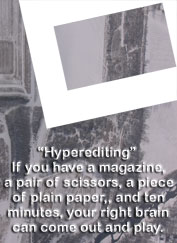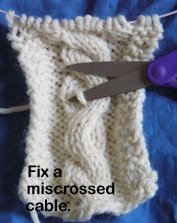On the 13th we began our day with a trip downtown to see the Steamboat Arabia Museum.
Goods and people were, in the 1850s, very often moved by steamboat, up and down rivers.
It was a dangerous life for a steamboat -- dead trees would fall into the river, and the current would push one end into the river bottom, leaving branches, or roots, or tree trunk sticking up, lurking under the surface of the water. An unknown number of "snags" in an uknown places waited to impale the hull of a boat.
We heard that the average life of a riverboat was 5 years..............
The Arabia, freshly loaded with goods for riverside customers, hit one of those snags in 1856, and went down with 200 tons of cargo (she sank slowly; all the human passengers were saved).
When you go to visit the Arabia Museum (and if you find yourself with spare time in Kansas City, do go!), you walk into a room above ground where one of the Arabia's paddle wheels turns..........
Then you join a tour group for the first part of your experience. We learned a lot about rivers, river boats, and life on the western frontier of the USA in the 1850s.
Here, in front of a pic of the people who salvaged the Arabia, is our excellent tour guide. He is a re-enactor of life in the USA in the middle of the 19th century, and is passionate about that time, as well as extremely well informed. We were lucky to get to have him teach us about that time, and to have him there to take questions.....
Here is a bit of what we were told.
The natural behavior of rivers flowing over dirt (rather than rock) is to shift position from time to time. It came to be, in the 20th century, that the Arabia was under someone's corn field, rather than under the current location of the Missouri River.
There was at least one attempt to salvage her cargo in the first part of the 20th century, but the water table where she lies is but 10 feet below ground level, and the Arabia is 25 feet below that....
In the 1980s, modern imaging techniques were used to determine the outline of the Arabia, 35 feet below ground level.
The people who did this project were mindful of the historical value of the goods that lay under water and earth, inside what was left of the Arabia. Wood, leather, and other organic materials which have been under water for over 150 years tend to disintegrate if they are brought up and allowed to dry out.
In the 1980s, there was very little information about how to do fresh-water salvage. People knew a lot about salt-water salvage, but not fresh-water salvage. No one wanted to lose anything of value to history, so the search for information on how to preserve/conserve the Arabia's cargo was vigorous and thorough.
Finally someone was found in Canada who had been successful at preserving wood that had been immersed in fresh water for many (many) decades. (If I remember correctly, it's ethylene glycol you need to soak the wood in. Eventually the ethylene glycol will sink in and preserve what is left of the wood.....)
Once the research on conservation/preservation was complete, and the plans were made for how conservation would be done, the excavation could begin. Moving enough water away (and keeping it away) so that excavation and salvage would be possible was non-trivial........... Enormous pumps pulled water out of the ground around the Arabia, and poured that water into plastic-lined ditches that lead to the river. Those pumps ran 24/7, for the many weeks the salvaging took place.
As the water was removed, the dirt could also be removed..........
Have I mentioned that the deck of the Arabia was 177 feet long? That was a big hole in the ground...................
The excavation team was able to recover all of the Arabia's cargo, along with parts of the ship. Goods were removed into industrial-size refrigeration units to await conservation. A special ethylene-glycol shower was built for a big piece of the stern of the boat. That shower ran (recirculating the ethylene glycol), until the preservation was complete.
When the desired materials had been pulled from the Missouri mud, the water pumps were turned off. In one day, the hole filled with water. It took weeks to shove all the dirt back into the hole, around what is left of the Arabia. The next spring, the farmer whose land holds the Arabia planted soybeans over her resting place.....
The heavy-duty work of cleaning/sorting/preserving the cargo of the Arabia is still underway. I think we were told that 60 tons of that cargo are yet to be dealt with...........
The Arabia is an astonishing time-capsule of goods that were sold up and down the rivers in the middle of our country in the middle of the 19th century. The collection is not "part of a bucket, one saw, two buttons and six pins."
It's dozens of buckets, dozens of saws, thousands of buttons and pins. All in one place, giving a sense of the magnitude of the amount of goods that were moved (and presumably would have been purchased, had they reached their destinations). The variety of goods. The amount of goods indicating luxury and sophistication.
The image many of us have of life in Missouri and Kansas in the 1850s is of a family in an underground sod house, with a tin plate and a wooden spoon Pa carved before they left the forests of Indiana. A family clothed by the labor of Ma's hands. While this is perhaps not far from the truth for those who lived far from the big rivers, the story near the big rivers was very different.
We know from the cargo of the Arabia that china imported from England was available. We know that pre-made clothing, with ceramic buttons, was available in large quantities, as were pre-made shoes and boots.
Tools for the home, and for business, moved in large quantities on the rivers.
The Arabia continues to answer questions about the 1850s -- were many people literate? (Hundreds of pens, dozens or hundreds of ink wells.....) Did women in the 1850s have pierced ears? (Every earring salvaged from the Arabia is for pierced ears....)
Here is a brief overview of some of the things the Arabia carried. Beads! Bottles. We were told that liquids came in barrels. Kerosene, vinegar, etc. People didn't buy a barrel of vinegar. They went to a merchant, who filled a bottle with what was wanted. And maybe sold them the bottle, too.
This pic isn't as clear as I wish it were -- that is a LOT of beads, around bottles and I'm not sure what all.
The aforementioned pierced earrings.
Household goods.............
You know this is next to my heart. My sisters, who hung their laundry out, just as I do in summertime, needed clothespins.... Who knew there were snap clothespins in the 1850s, or commercial clothespins at all, for that matter! (See the iron, at right? Not sure what those dowel things are at left. Knitting needles?)
Scales and pots and pans and teakettles. And candles and mirrors.
Pens and nibs. And I wonder what those ridgey things in the lower right corner are? I could spend many more hours in that museum, looking more carefully at ... everything...........
Wooden boxes of wooden matches, and, at left, tobacco pipe bowls.
Buckets and mirrors, and I am not sure, but suspect that big thing we can't really see at the bottom may be a wheelbarrow.
Pocket knives. Look at the variety of handles. I see antlers, and various kinds of wood, and probably other materials, too.
Keys, and more keys, and more keys, and locks.
Fancy locks, some of them.
There were a few prices noted, here and there, which I found interesting.
Silverware. More dishes. I think there is something in those paler bottles. I wonder what.....
Buckles, buttons, sewing needles, bottles.........
Coffee mills. Which imply coffee! In "the wilderness".............
Preserved fruits and vegetables! We were told one of the excavators opened a bottle of pickles and ate them, and they were good (tasted good, as well as did not make him ill.....). Who knew! In the 1850s!
Tools. Look how the saw in the middle is lacework, where the metal has gone...........
Large photos of thimbles, buttons, buttons, scissors, pins, bottles......... Not just "strictly utilitarian" goods, but decorated ceramic buttons, and fancy metal buttons......
We were told those decorated ceramic buttons matched the fabric of the dresses they buttoned up, once upon a time. The dresses are long gone, their cotton fabric lost to the river, but the buttons bear witness.........
Locks and keys and latches and more latches and doorknobs. The things in the upper right corner are counter-weights for a scale, and the sign with the round tan things, top center, says (I believe) "bureau knobs."
Keys and more keys and I have no idea what any of that stuff at the top is.
Doesn't all this just blow your mind? The huge number of different sorts of things, and the vast numbers of individual things? And I have definitely NOT shown you even a smattering of every sort of good. No boots or shoes, for example....................
This is a fascinating place to visit. I would definitely spend more time in the Arabia museum if I lived nearby..............
One last look at the paddle wheel, from a different perspective.............. It is Large............
We tore ourselves away from the Arabia Museum, and toddled over to Arthur Bryant's for barbeque, which is quite nearby. While you wait to place your order, you can look at pics of famous people who have enjoyed Arthur's barbeque before you.............
We had a delicious lunch.
My cousin and her husband, from Indiana, had come to Kansas for the birthday festivities. We spent the afternoon at my parents' place, chatting, and seeing pics (and the videos their son had taken from his drone!) of his new place in the country.
Then we had birthday dinner with all of the family who were in town at that point. Happy Birthday, Dad!
.














































No comments:
Post a Comment